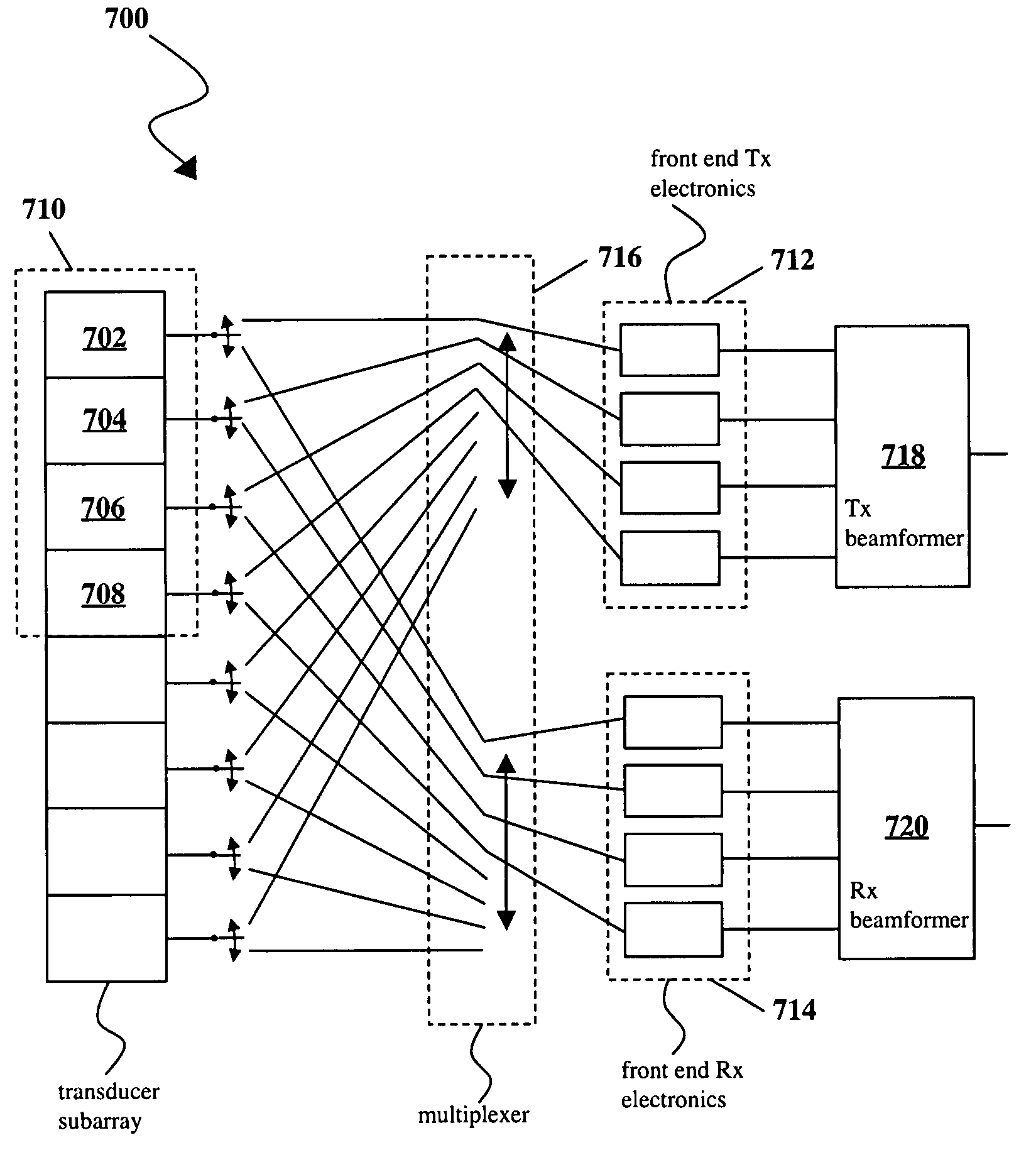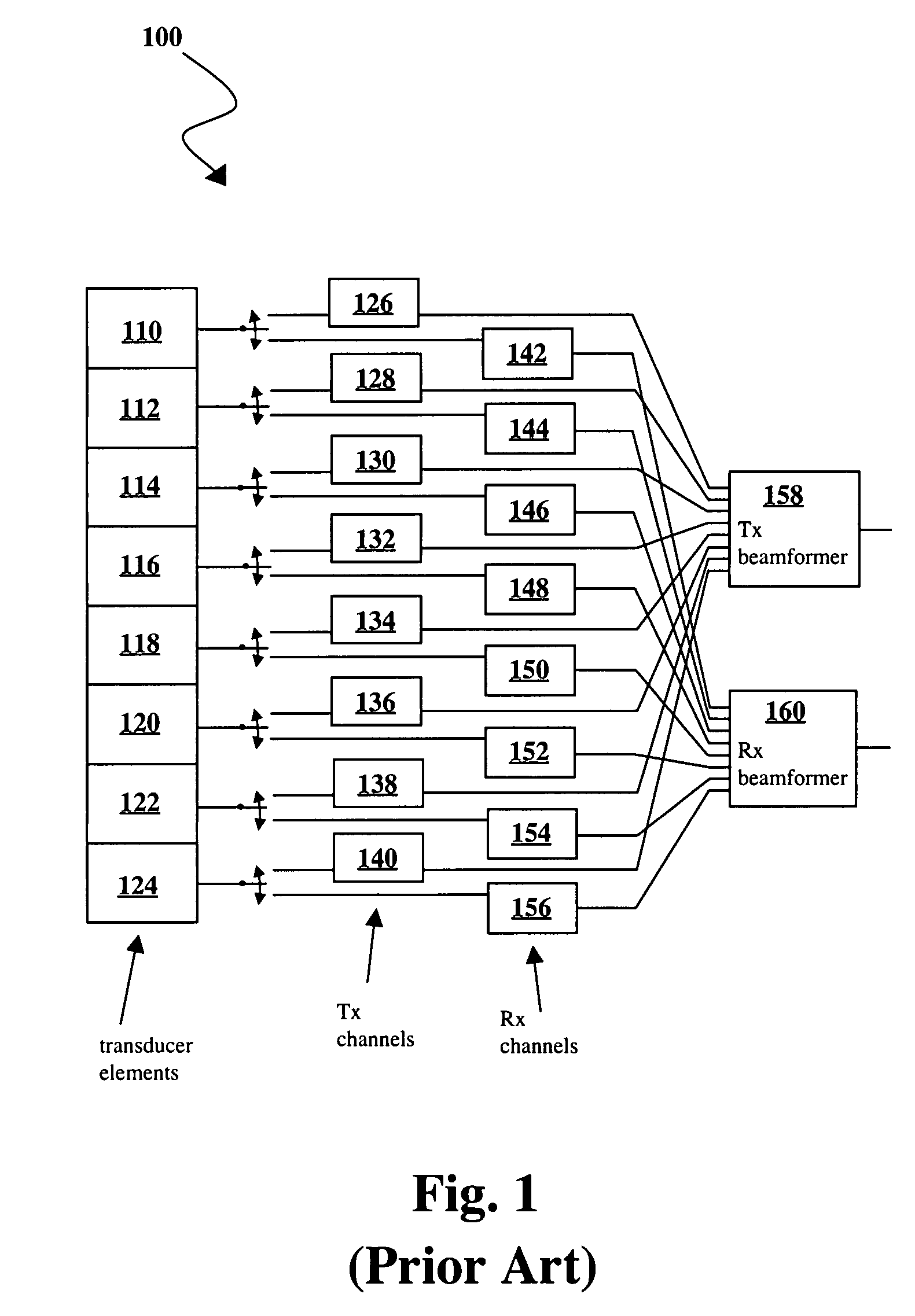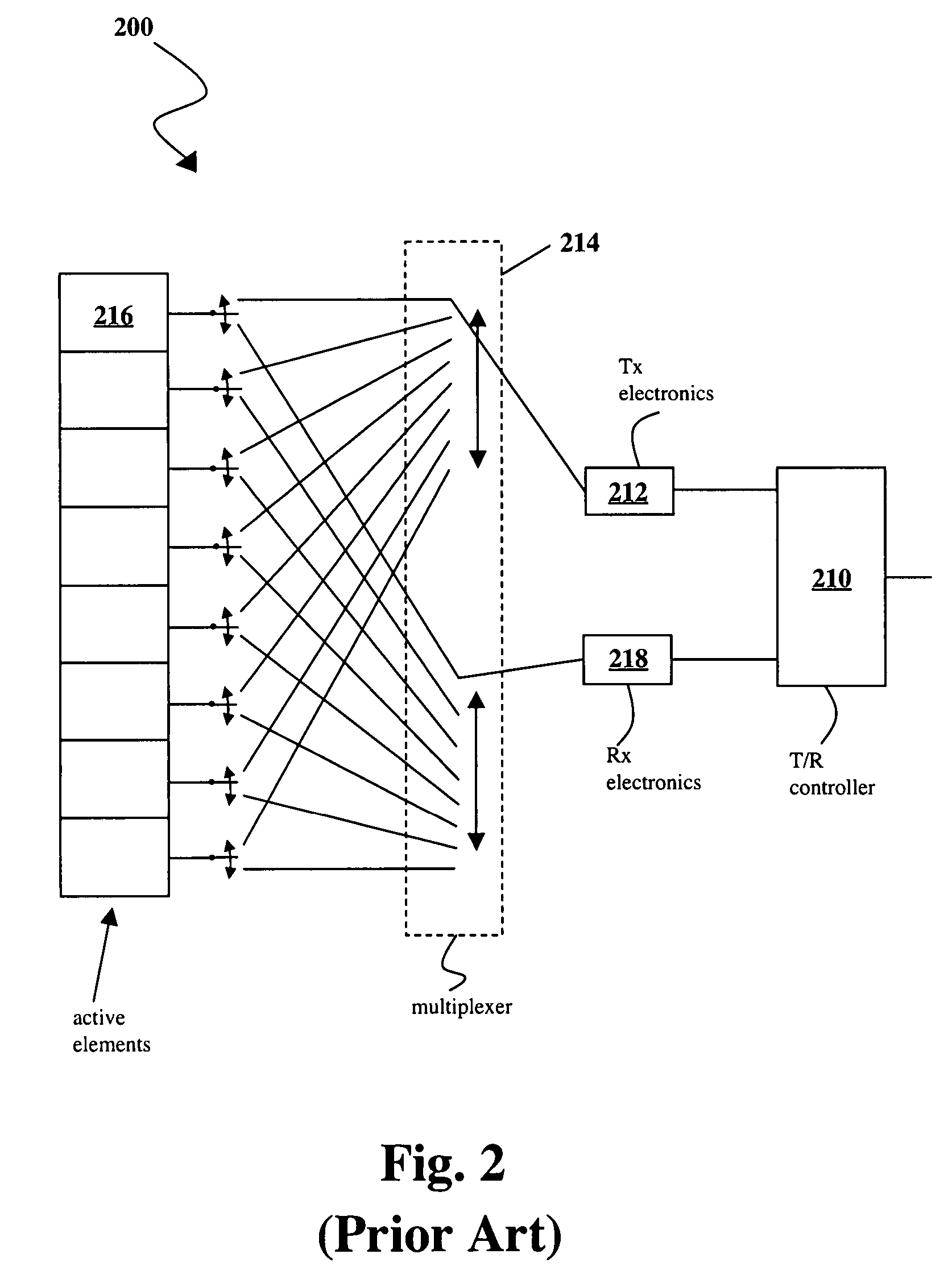Apparatus and method for phased subarray imaging
a subarray and imaging technology, applied in tomography, applications, instruments, etc., can solve the problems of inability to achieve similar 3d imaging systems using conventional hardware and methods, inability to scale well to achieve similar 3d imaging systems, and inability to achieve and the analog nature of front-end hardware has not experienced the same reduction in cost and size. , to achieve the effect of reducing the electronic complexity of the front-end ultrasound imaging system and low beam ra
- Summary
- Abstract
- Description
- Claims
- Application Information
AI Technical Summary
Benefits of technology
Problems solved by technology
Method used
Image
Examples
example 1
[0065]For the special case of a fixed number of adjacent elements in each subarray and a fixed overlap 534 in FIG. 5 equal to half the number of adjacent elements M1 528 or M2 530 along lateral directions 512 or 516 in each subarray, the filter for interpolation is merely a bandpass; no additional spectral modification in a restoration filter is required. For narrowband imaging, the bandpass is 1D. For wideband imaging, the bandpass is in general 2D. The final high-beam-rate PSA image is a linear combination of individual high-beam-rate subarray images. For a 2D cross-section in the plane defined by the azimuth angle θ1 518 or the elevation angle θ2 520, the weight b[k] applied to the high-beam-rate subarray image corresponding to kth subarray is given by
[0066]b1[k]=(K1+12)-k-(K1-12),
where k is between 0 and K1−1. For this geometry, and more generally for overlap 534 less than half the number of adjacent elements M1 528 or M2 530, the frame rate reduction will never exceed a factor...
example 2
[0071]FIG. 8 illustrates the impact of restoration filters including the subarray weights on the high-beam-rate PSA coarray. FIG. 8 shows the coarray corresponding to a 1D lateral cross-section of 3D data in the plane defined by the azimuth angle θ1 518 or elevation angle θ2 520. In this example, N1 510 or N2 514=10, M1 528 or M2 530=6 and K1 or K2=3 in FIG. 5. Referring back to FIG. 8, coarrays 810, 812 and 814 each correspond to a subarray. Each coarray 810, 812 and 814 has 11 non-zero samples (2 M1 528−1 or 2M2 530−1). Without restoration filtering, the weighted sum of coarrays 810, 812 and 814 results in an unrestored PSA coarray (not shown) that is not suitable for producing a high-beam-rate image. One possible set of restoration filters 816, 818 and 820 that could be used to obtain a high-beam-rate PSA coarray 828 that is comparable to a FPA coarray are shown. In this illustration, all the weights are equal to 2, and are incorporated into the magnitudes of the restoration filt...
example 3
[0072]A comatrix serves as a useful tool for choosing which transmit and receive subarrays should be used to form the final coarray. Two example comatrices are shown in FIG. 9a-b, all with N1 510 or N2 514=16 and M1 528 or M2 530=4 (once again, FIG. 9a-b illustrates a 2D cross-section in the plane defined by the azimuth angle θ1 518 or elevation angle θ2 520 in FIG. 5). Each example demonstrates how different choices for the number of subarrays and the transmit / receive subarray combinations affect the restoration filter needed to achieve an FPA-comparable coarray.
[0073]For the example shown in FIG. 9a, the array 900 is divided into four non-overlapping, adjacent subarrays 910, 912, 914 and 916. Images are acquired using 16 permutations 918, 920, 922, 924, 926, 928, 930, 932, 934, 936, 938, 940, 942, 944, 946 and 948 of the subarrays 910, 912, 914 and 916, one for every transmit / receive combination. The weights used in summing the coarrays for permutations 918, 920, 922, 924, 926, 92...
PUM
 Login to View More
Login to View More Abstract
Description
Claims
Application Information
 Login to View More
Login to View More - R&D
- Intellectual Property
- Life Sciences
- Materials
- Tech Scout
- Unparalleled Data Quality
- Higher Quality Content
- 60% Fewer Hallucinations
Browse by: Latest US Patents, China's latest patents, Technical Efficacy Thesaurus, Application Domain, Technology Topic, Popular Technical Reports.
© 2025 PatSnap. All rights reserved.Legal|Privacy policy|Modern Slavery Act Transparency Statement|Sitemap|About US| Contact US: help@patsnap.com



